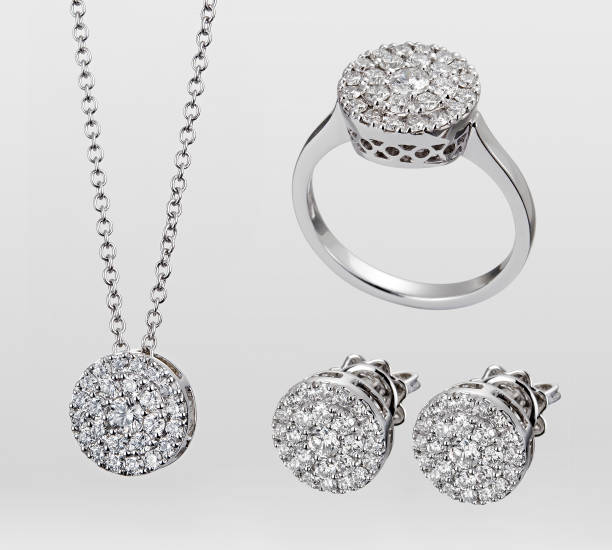Determining Diamond Clarity All Entries

Every diamond is unique and carries value in multiple ways, as it often symbolizes a wedding engagement or other type of achievement. Diamonds are among the most sought after jewelry and can retain value based on the 5 C's: cut, color, carat, clarity and cart weight. Here are methods used by gemologists for determining diamond clarity.
What Diamond Clarity Means
The primary concern about clarity in diamond grading is the absence of blemishes or flaws, known in the industry as "inclusions." A seasoned gemologist uses a 10X microscope to examine the diamond and evaluate it with the naked eye. The clarity grade encompasses the factors of visibility level, location, and number of flaws. Many times, several gemologists must work together to assess the value of a diamond to arrive at a consensus.
Diamond valuation can be subjective and inconsistent among jewellers. Many times, its appearance will influence the value rather than just the number of noticeable flaws. The flawless diamond, which is extremely rare, is considered supreme among dealers and collectors. Most consumers, however, are not in the market for buying the most valuable or highest priced jewelery.
GIA and AGS Classifications
The Gemological Institute of America (GIA) sets diamond clarity rating standards and divides diamonds into categories based on clarity: VVS, VS and SI. The VVS classification is very difficult to use under 10X magnification and commands the highest value. VS diamonds are moderately visible under 10X magnification and are the more affordable and practical option. SI clarity is divided into three categories: SI-1, SI-2 and SI-3. The first two levels reflect low level of inclusions in the stones, whereas the SI-3 category consists of diamonds with flaws that can be seen with the naked eye.
In addition to the GIA scale, diamond appraisal experts can use the American Gem Society (AGS) scale of 0-10 for grading diamond clarity. Zero on this scale is the ideal rating that means the diamond is flawless with no inclusions. A grade of 10 means the diamond exhibits obvious inclusions, so it has lower value.
Valuation Factors Beyond Clarity
When clarity is no longer the top priority, diamond enthusiasts focus on size and color as valuation factors. AGS provides a scale for cut and color from 0-10 and again, zero is the ultimate rating in each case, reflecting both finest cut and most colorless state. AGS further offers verification reporting on its website for comparing diamond grading reports with information stored in the organization's diamond report database.
Conclusion
Understanding the grading system for diamonds will help you get the best deals for investing in and selling your jewelry. Diamond prices are often based on what someone is willing to pay for them. Generally, though, the size of an inclusion in relation to the overall diamond can have a big impact on price. Working with certified gemologists for determining diamond clarity is the best way to arrive at a fair price.